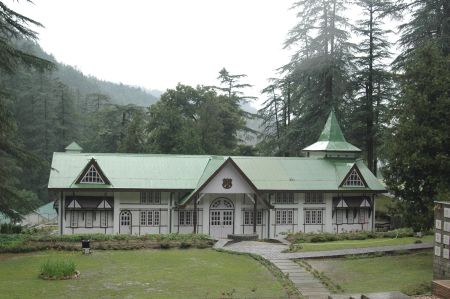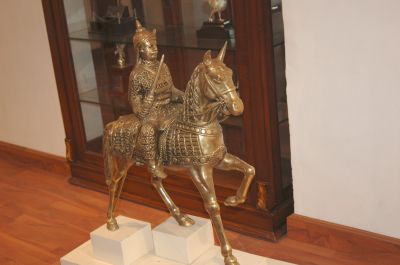
“The museum is to honour the Indian soldier through the ages and is a repository of the five millennia long martial history of our great civilization†is how Major General CM Sharma, MGGS (Training), ARTRAC proudly defined the motive behind the effort to bring forth the indigenous version of the military history.

A section on uniforms has mannequins donning present day uniforms but there are also on display etchings depicting pre-independence uniforms. The fraternal ties which the Indian Army enjoys with the Royal Nepal Army have been represented in the medals gifted by the Royal Army on display.
A photo gallery which also houses flags and military bands has a pictograph biography of Field Marshal Manekshaw put up. Pinned on a separate column is the photocopy of the execution order of Mangal Pandey’s execution order dated 7th April, 1857. Along side is the picture of Lt Gen Niazi of Pakistan Army signing the surrender of his forces in East Bengal to Lt Gen Aurora, Commander of the Eastern Army in the December 1971.
A section on armaments places on record the evolution of weaponry, right from the boq and arrow, swords, muzzle loaders, tank busters to Kalashnikov 47s. Interestingly, as if saluting the greens around, is a section devoted to environment. “Since the army is spread all over the country and in some of remotest regions, it is best aware of the status of the ecology across the country,†says Colonel Ali, an alumni of Kings College, London.
A separate room to mark the importance of Shimla and its unique position in the history of the sub-continent houses pictures about various landmarks the heritage town has. “It was from Shimla that the command of the Indian forces participation in World War II was directed,†says General Sharma. The decision on partition of India and Pakistan and the ‘Simla Agreement’ are part of the legacy the town holds.

Not just to preserve the rich heritage the armed forces hold but the museum also commemorates the land inhabited by a warrior people, the Dogra’s and hopes to motivate the young mind to be proud of his martial blood.
As Editor, Ravinder Makhaik leads the team of media professionals at Hill Post.
In a career spanning over two decades through all formats of journalism in Electronic, Print and Online Media, he brings with him enough experience to steer this platform. He lives in Shimla.





pretty informative!
hopin the X-gen knows about the legacy and remembers it thru ages!
good informative
Thanks for all the piece of information about the place.
One must make a visit to gain knowledge about those who laid their lives for the secured future for generations to come… including myself. Salute to the Bravemen !
As also to know about the place, the Dogra people, etc as highlighted in your write up. Should be quite interesting.